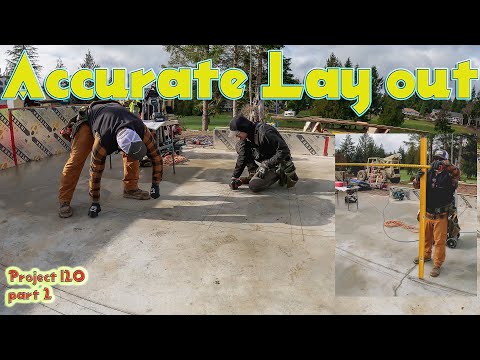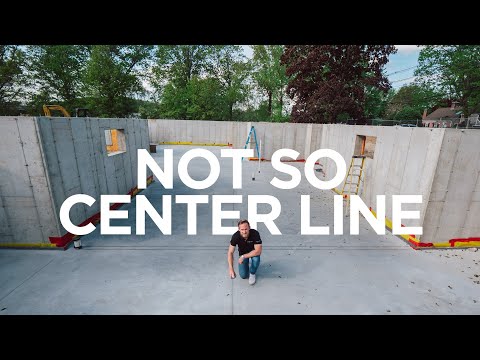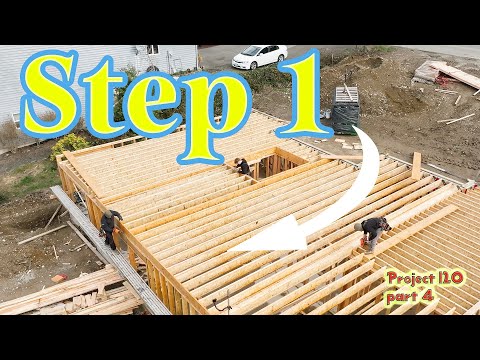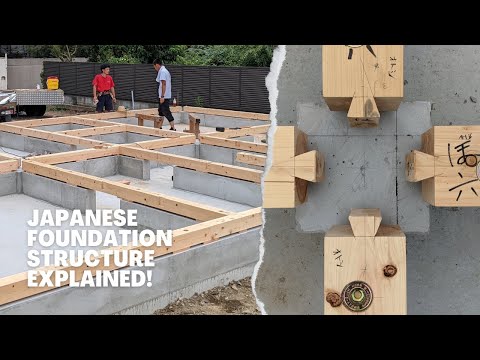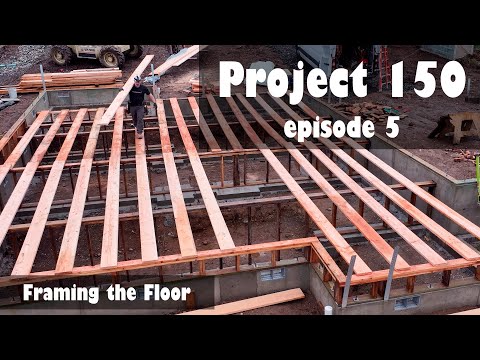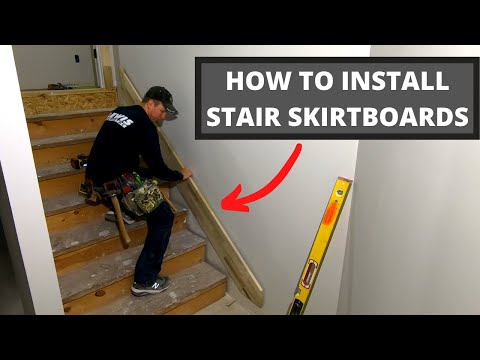Snapping lines and laying out plates is certainly easier with two people, but it is not impossible with one, and it has the added advantage that no one has to listen to your music that day.
Begin with a straight reference line
Snap a line along the longest straight uninterrupted section of the foundation, the back foundation wall, in this case.
Set the back mudsill and use it to pull numbers for the front. He tacks the plate to the foundation using a MAX High-Pressure nail gun (HN 120 concrete nailer), which shoots nails into concrete and steel.
Tim claims that he will explain in a future video why there are no anchor bolts, and we tend to believe him.
Establish a square perpendicular line
Hook the back mudsill and measure to the first foundation step: 90 inches. He measures back 2 inches and sets the "laser" (Stabila LA 180L) in that two-inch spot. The laser shoots a straight line and a 90-degree line.
Tim sets the laser detector on the opposite side wall at 90 inches, establishing a parallel line to the mudsill.
At that opposite sidewall, he hooks the mudsill and "laser-plumbs" down at 90 inches. Through a series of steps, he dials in exactly where the laser receptor must be to establish parallel points on the sidewalls.
Transfer points on each step using the laser detector and levels, and then connect the dots and snap lines.
Because he is not sure at this point what the overall length is, he runs the mudsill a little long
RECAP:
- The back wall was snapped straight, and the mudsill was nailed down.
- The laser was set up to shoot two lines square to each other.
- All steps were marked using the laser as a guide, and the marks were connected with a chalk line.
- Mudsill is installed to one sidewall, giving him a perfect reference for pulling measurements east/west (sidewall) and north/south (back wall).
Because the first big corner is square, everything else will be square.
Establish parallel lines to the two square lines
Now he works the other two walls, laser-plumbing down and marking the steps.
In transferring the marks, there is some guesswork involved in setting the laser detector. Tim has a number he wants to find so that he can mark it in multiple locations on the front wall.
The detector can be placed semi-arbitrarily to measure to. This number will almost certainly NOT be his target number, but it will reveal the difference between his target number and the arbitrary placement number.
He could do the math to determine the correct point, but he does something easier and more goof-proof. He holds the arbitrary number on the detector point and then marks the target number.
Adjust the layout as needed to compensate for concrete forms moving slightly during the pour/cure
In the process, he discovers a slight discrepancy between the perfect world (blueprints) and the real world (cured concrete), so he sheats one love of a mudsill into perfect compliance.
This causes the edge of the mudsill to overhang the foundation slightly, but that is OK because it will be hidden by landscaping. It is better to correct the mudsill into being square than to transfer an out-of-square foundation all the way up to the roof.
Now he moves to the opposite sidewall, measuring, marking, snapping, and muttering numbers under his breath.
Tim claims that these layout methods work with non-Stabila tools, but we're not sure why anyone would want to test that.
